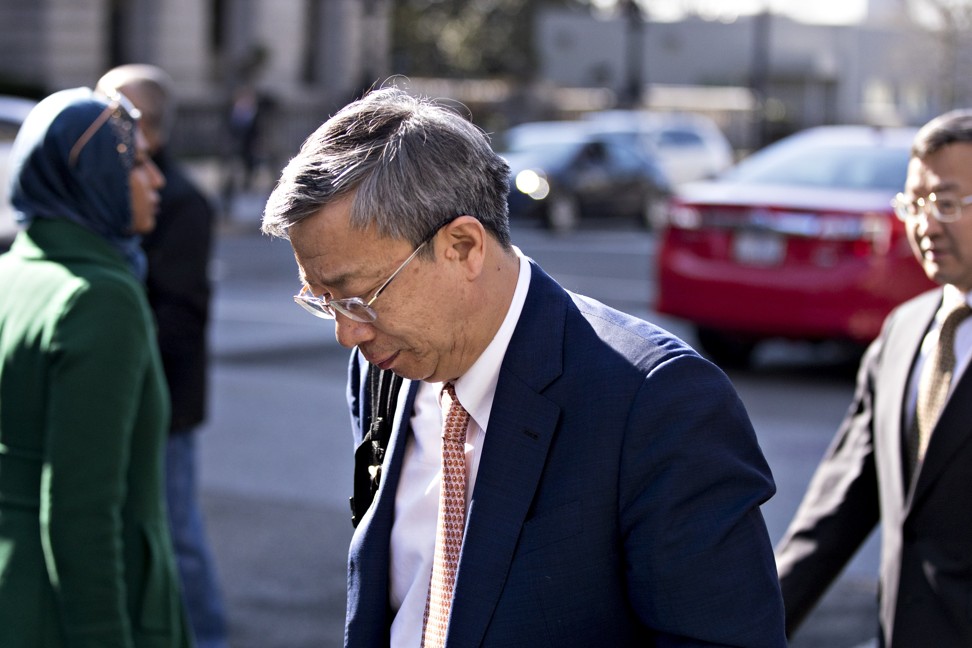
China’s banks remain reluctant to lend amid US trade war uncertainty, new data shows
- The value of new yuan loans rose to 1.18 trillion yuan (US$170.54 billion), from April but below market expectations of 1.3 trillion yuan
- Impact of US-China trade war is spooking lenders, although overall social credit picked up
The value of new yuan-denominated loans dropped to 1.18 trillion yuan (US$170.54 billion) in May, lower than the market expectation of 1.3 trillion yuan and only slightly higher than April’s reading of 1.02 trillion yuan, according to data released by the People’s Bank of China (PBOC) on Wednesday.

“The rise over April was lower than expected, reflecting continued pressure on the economy,” said Chen Ji, a senior analyst with the Bank of Communications in Shanghai.
National aggregate financing, a broad measure of credit to the real economy, rose to 1.4 trillion yuan from 1.36 trillion in April, an increase of 446.6 billion from a year earlier. As well as new loans, national aggregate financing also includes entrusted loans, banker's acceptance bills and other types of financing.
The growth of M2, the broad measure of money supply at the central bank, the source for much commercial lending, remained at 8.5 per cent in May, unchanged from April’s figure.
Other headline figures released over the past week have painted a gloomy picture of the world’s second largest economy and reiterated the scale of the challenges facing policymakers, as trade tensions continue to escalate.
May’s manufacturing purchasing manager index – a measure of sentiment among factory operators – return to contracting territory, while exports to the US dropped 3.7 per cent despite the expected front-loading efforts of US importers, keen to buy goods at a cheaper rate before tariffs escalated at the beginning of June.

The National Bureau of Statistics is due to release other economic data on Friday, including fixed asset investment, retail sales and industrial output, which will help build a fuller picture of some of China’s key sectors.
Wang Jun, chief economist at Zhongyuan Bank, said the lending data last month indicated the shortage of domestic demand, and also suggested that China was experiencing more domestic structural problems than external shocks.
“At the moment, the authorities tend to use a proactive fiscal policy to help stabilise the economy, while a prudent monetary stance will be in place for risk prevention purposes,” he said. Wang added that if the Fed pursued a further rate cut, it would give the PBOC further room to loosen monetary policy, with cuts to the amount of cash banks have to hold and the interest rate.
Beijing has long been reluctant to deploy aggressive monetary policy due to the side-effects drawn by the massive stimulus following the 2008 global financial crisis.
Financial regulators also moved quickly to seize Baoshang Bank, a small inner Mongolian commercial lender which was left reeling by the economic slowdown, but the seizure affected interbank liquidity. The PBOC will also try to prop up the yuan by issuing a batch of central bank bills in Hong Kong later this month.
The expectation of monetary policy easing was boosted by recent remarks from the PBOC governor, Yi Gang.
In an interview with Bloomberg last week, Yi said the country has “tremendous” room for policy adjustment. “We have plenty of room in interest rates, we have plenty of room in required reserve ratio rate, and also for the fiscal, monetary policy toolkit,” he said.
“The ‘interest rate cut’ room is gradually opening”, potentially in the fourth quarter, to help offset the uncertainties of the trade war, according to a research note by Hua Changchun, chief economist at Guotai Jun’an, a Chinese investment bank.

